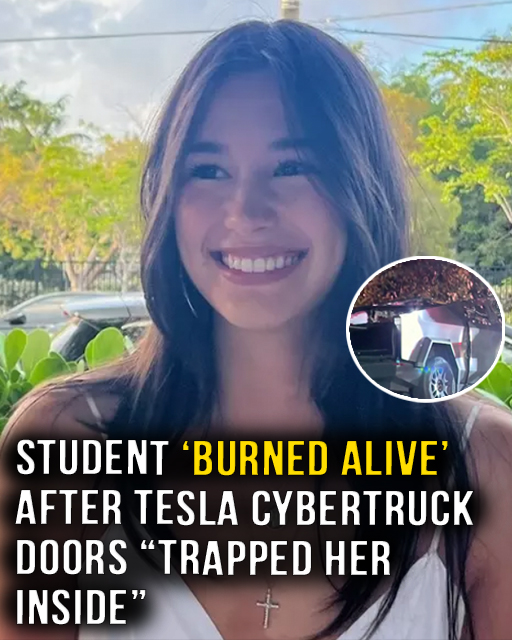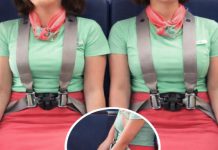Tragic Incident Involving Tesla Cybertruck Raises Questions on Vehicle Safety
In a devastating incident that has sent shockwaves through the community, a California college student lost her life in a tragic crash involving a Tesla Cybertruck. The incident occurred on November 27, 2024, when 19-year-old Krysta Tsukahara was riding with three friends, all recent graduates of Piedmont High School, during their Thanksgiving break. The vehicle, driven by Soren Dixon, also 19, collided with a retaining wall and quickly caught fire, leading to catastrophic consequences for the occupants. The harrowing nature of this incident has raised serious questions about the safety features of modern vehicles and the responsibilities of manufacturers.
According to the Piedmont Police Department, when emergency responders arrived, the vehicle was “fully engulfed in flames.” Eyewitnesses reported seeing thick plumes of smoke and a raging fire as panic ensued among onlookers. The tragic outcome saw Krysta, along with two other passengers, unable to escape as the fire spread rapidly. The sole survivor of this horrific event, Jordan Miller, was rescued by a friend who witnessed the crash and attempted to save the trapped individuals by smashing a window with a tree branch. This act of bravery underscores the desperation of the situation, leaving many in the community to wonder what could have been done differently to prevent such a loss of life.
Investigation and Findings
In the aftermath of the crash, a thorough investigation was launched to ascertain the factors leading to the collision. Investigators revealed that Soren Dixon had substances including methamphetamine and cocaine in his system, with a blood alcohol content exceeding 0.195, more than twice the legal limit. This alarming revelation not only highlights the dangers of impaired driving but also raises questions about the social circles and environments these young individuals navigated. Furthermore, autopsy reports indicated that both Krysta and another passenger, Jack Nelson, aged 20, tested positive for alcohol and cocaine, suggesting that the group may have been engaged in risky behavior prior to the accident. Despite surviving the initial impact with minor injuries, Krysta was tragically trapped within the vehicle as flames engulfed it, a haunting image that her family will carry forever.
In the wake of this tragedy, Krysta’s parents have filed a wrongful death lawsuit against Tesla and the estate of the Cybertruck’s owner, Charles Patterson, whom they allege is related to Dixon. The lawsuit accuses Tesla of negligence, claiming the company has long been aware of flaws in its electronic door systems but failed to take the necessary corrective actions. The filings assert that the Cybertruck’s 12-volt battery-powered doors became inoperable upon impact, effectively entombing the passengers inside as flames consumed the vehicle. This aspect of the case has drawn significant attention, as it brings to light the critical importance of vehicle safety features that are supposed to protect occupants in the event of a crash.
Concerns Over Vehicle Design and Consumer Safety
Legal representatives for the victims express grave concerns about Tesla’s design choices. According to the lawsuits, the manual door release mechanism was poorly designed and difficult to access during an emergency. This left victims with no viable means of escape, putting them in a perilous situation during a life-threatening crisis.
“It’s just a horror story,” remarked Krysta’s family attorney, Roger Dreyer, highlighting the lack of adequate safety measures in the vehicle’s design.
The design flaws noted in this incident echo broader concerns shared by automotive safety advocates, who emphasize the need for rigorous testing and reevaluation of emergency exit systems in vehicles.
Moreover, Krysta’s father, Carl Tsukahara, lamented the loss of his daughter, describing her as a bright young woman with a promising future. He voiced his frustration regarding Tesla’s accountability, stating, “This company is worth a trillion dollars – how can you release a machine that’s not safe in so many ways?” Similar sentiments are echoed in the lawsuit filed by Jack Nelson’s parents, which criticizes the design of the Cybertruck for leaving rear passengers with only a concealed mechanical release that could easily go unnoticed in a chaotic situation. The implications of these design flaws not only highlight the immediate dangers faced by passengers but also raise questions about the responsibility of manufacturers to ensure that their vehicles have fail-safe mechanisms in place.
Ongoing Legal Actions and Impact on Tesla
As investigations progress, the California Highway Patrol has determined that speeding and impaired driving were key factors contributing to the crash. However, the victims’ families argue that this should not absolve Tesla of responsibility.
They assert that the vehicle’s design should not have entombed individuals in such a manner, regardless of driver error.
“It’s our way of holding the wrongdoer accountable and correcting bad conduct,” Dreyer emphasized, illustrating the resolve of the families to seek justice not just for their loved ones, but also potentially for future drivers and passengers who could face similar dangers.
Since its launch in late 2023, the Cybertruck has become one of the most controversial vehicles in Tesla’s history, facing numerous recalls, declining sales, and increasing legal scrutiny. Reports of other safety incidents related to the Cybertruck have emerged, compounding the concerns of consumers and regulatory bodies alike. With the ongoing lawsuits and investigations highlighting potential safety deficiencies in Tesla’s vehicles, the pressure is mounting on the company to reassess its design protocols and prioritize consumer safety. For those interested in understanding more about vehicle safety regulations and oversight, the California Highway Patrol’s resources can be found at this link. Increasingly, consumers are demanding greater accountability from automakers, particularly as the automotive landscape evolves with newer technologies and designs.

















